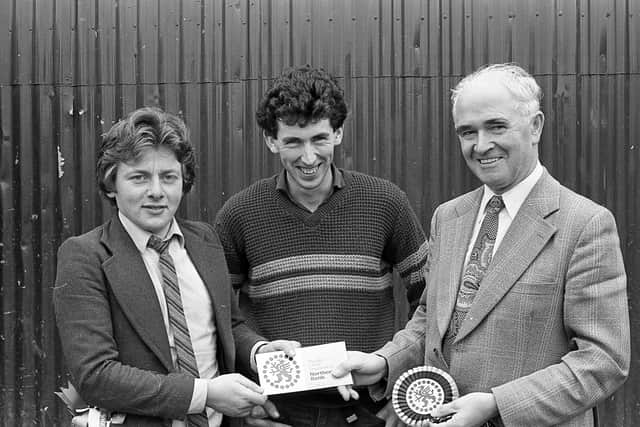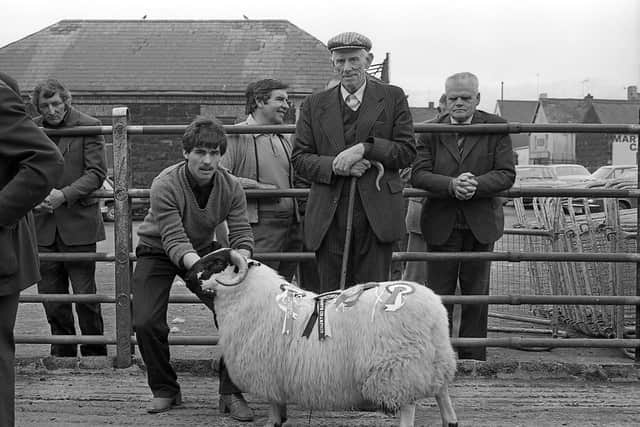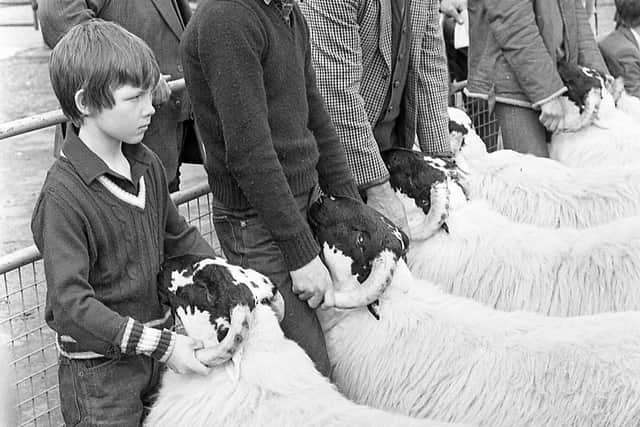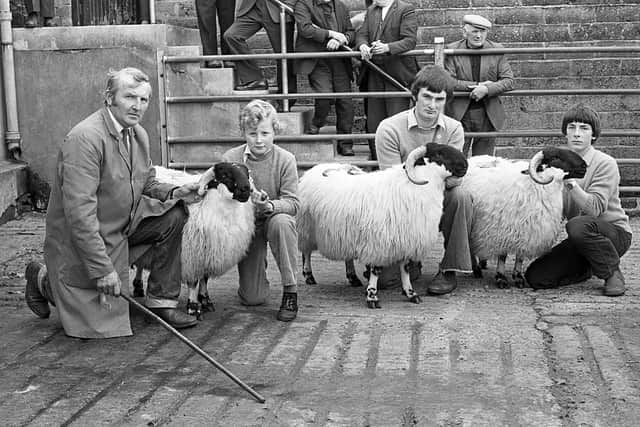Corporation scheme proposes ‘no cattle’ on the streets of Belfast (1937)
and live on Freeview channel 276
The scheme, which was reported likely to cost several thousands of pounds, included the transference of the cattle sale yards, which are in Oxford Street, to the Hay Market, the construction of a subway under Stewart Street, connecting the Hay Market with the public abattoir, the construction of over-line bridge from the abattoir to the government inspection depot at May’s Fields, the provision of a specially-constructed track on the property of the Great Northern Railway Company adjoining Laganbank Road, by which cattle could be driven from the inspection depot to the boats.
At the meeting, which was summoned by the Lord Mayor, was attended by Councillors W J Magowan and James Holland, chairman and vice chairman of the Corporation Markets Committee, Mrs Harold Barbour, Alderman G R Black, chairman of the Finance Committee, Councillor Hugh Armstrong, chairman of the Improvement Committee, Councillor R M Harcourt, chairman of the Police Committee, Sir Ernest Herdman, chairman of the Harbour Board,, Mr M J Watkins, secretary of the Harbour Board, Mr S Berkeley, Mr John Archer, town clerk, Mr W E Crawford, city treasurer, Mr R E Forbes, estates superintendent, and other Corporation officers.
Advertisement
Hide AdAdvertisement
Hide AdThe Permanent Secretary, Dr G Scott Robertson represented the Ministry of Agriculture.


The News Letter reported that it was “understood” that there had been long discussion on the matter, and that it was decided to appoint a special committee to investigate the scheme and inspect the land.
Mr S Berkeley pointed out certain objections to the scheme as it stood at that time, “namely, to the proposed driving of cattle through the existing railway tunnel at the Queen’s Bridge”.
It had been suggested that “to drive animals through the tunnel might involve damage and cruelty to them”.
Advertisement
Hide AdAdvertisement
Hide AdIn that respect, therefore, it was not unlikely that the present plans would be modified, but that, “otherwise, the scheme seems to have met with general approval”.


The Great Northern Railway Company had made generous offers to the Corporation in support of the project which was calculated greatly to facilitate traffic of all kinds the thoroughfares in the vicinity of the markets and saleyards.
Mrs Harold Barbour had undertaken to finance the construction of the over-line bridge, and had handed to the Corporation a cheque for £2,000, towards the cost of the work.
Mrs Barbour had, however, asked that acceptance of the cheque should subject to the conditions that the work would be put on hand immediately, “and completed within a reasonable time”.
Advertisement
Hide AdAdvertisement
Hide Ad‘Reasoned speeches and useful advice’ at youth debate on agriculture: The first debate between the Ulster Young Farmers’ Clubs and the Agrarian Society of Northern Ireland was held in the Agricultural Buildings, Elmwood Avenue, Belfast, during this week in 1937, and the speeches from both sides “revealed a wide knowledge of agriculture and of the rules of public speaking”.


The subject was 'That the public expenditure on the land fertility scheme could be more profitably employed in other measures of state assistance to agriculture'.
Mr P Linehan, M Agr, president of the Agrarian Society of Northern Ireland, who was in the chair, said a debate between that society and the Young Farmers’ Clubs was an innovation.
He said: “There are obvious reasons why agricultural students should have good relations with the clubs.
Advertisement
Hide AdAdvertisement
Hide AdMiss Jean Fullerton, Hillsborough Young Farmers’ Club, who proposed the motion, explained the working of the Land Fertility Scheme, and took the view that it did not serve the best interests of the farmer.


She said: “It does not help the consumer, because it will not reduce costs. The farmer requires a better return for his crops and a solution for the vexed question of hired labour.”
She went on: “Potatoes are dead loss to the farmers, as are some other crops. It is, therefore, unfair to expect the farmer to apply lime and slag, increasing his production costs on crop on which he will have no profit.”